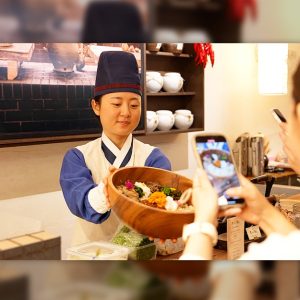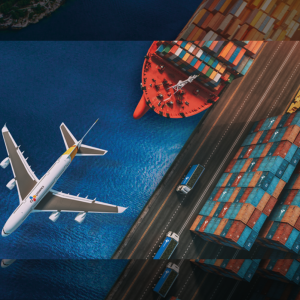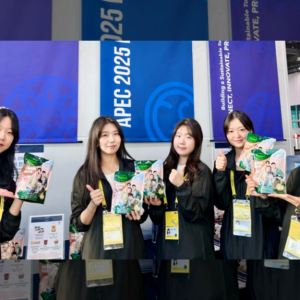
Sustainability, eco-friendly, ESG: these are all key terms frequently used when referring to rising environmental issues that should not be overlooked. Thankfully, individuals and companies worldwide have turned their attention towards efforts to protect the environment. CJ CheilJedang has joined the movement, pushing its sustainable environmental management activities forward by announcing its strategy for decarbonization and zero-waste. To learn more about this strategy, CJ Newsroom sat down with Chunghoon Ko from the ESG Center’s Environmental Strategy Team.
Environmental Strategy Step-by-Step
Q. What kind of work does CJ CheilJedang ESG Center’s Environmental Strategy Team do?
Ko: CJ CheilJedang is carrying out eight major strategies for sustainable management with two core values of Sustainable Environment and Health and Safety. The ESG Center’s Environmental Strategy Team is responsible for four strategic tasks in the environmental field. Specifically, efforts are being made to achieve significant results in response to climate change, sourcing sustainable raw materials, eco-friendly packaging and developing eco-friendly material solutions.
Q. Previously, CJ CheilJedang declared its intent to be a carbon neutral and zero-waste company by 2050. What led to this declaration and what specific plans are being implemented to achieve this goal?
Ko: Greenhouse gas reduction and plastic use are emerging as pressing topics of conversation around the world. These issues are not limited to governments, businesses or consumers, and everyone has a responsibility to be part of the solution. As a food company, we also felt the need to have a response system in place that targets these problems, so we set a long-term goal to establish carbon neutrality and zero-waste by 2050. However, the 2050 plan alone seems too far off in the distant future, so we also set a specific 2030 goal to serve as an intermediate benchmark.
By 2030, we plan to reduce greenhouse gas emissions by 25% compared to the last 20 years. This goal targets the reduction of emissions in the workplace through innovative products and solutions, and also aims to reduce greenhouse gas emissions among customers. At American and European workplaces, renewable and bioenergy sources will completely replace fossil fuel-based energy sources by 2030. This initiative will be expanded to the Asian region by 2050. We also plan to reduce water intake per production by 10% to 20% by 2030. Additionally, the company plans to establish zero landfill waste, which it has currently accomplished in South Korea, for all of its domestic and foreign businesses by 2030.
With these targets, efforts will be directed at minimizing the environmental impact of our products and creating a nature-to-nature cycle.
The First Step Toward Carbon Neutrality: Establishing an Eco-friendly Supply Chain

Q. Recently, CJ CheilJedang was the first in South Korea to establish an eco-friendly energy supply chain by applying gasification technology at its CJ Blossom Campus, a move which has gathered attention. What is gasification technology?
Ko: Wood fuel (biomass) can become either charcoal or biochar (biomass + charcoal) depending on how it is processed. When heated at a high temperature, carbon is released into the air and the biomass becomes charcoal and ash. Gasification technology, on the other hand, produces biochar with carbon contents, which is a substance between organic matter and charcoal. This technology is viewed as a leading clean energy solution worldwide since its low-temperature pyrolysis process creates few carbon emissions. In addition, steam which is produced from the heat generated during the gasification process is used to operate the factory, lowering energy costs, and enabling an innovative solution to carbon reduction by limiting its dependence on imported liquified natural gas (LNG).
CJ Blossom Campus’ Green New Deal Energy Supply Project is being promoted as a quick-win in the food business sector. As part of its Environmental Management Strategy Project established last year, the project’s new gasification facility will cover approximately 40,000 square meters and will receive 50 tons of steam per hour.
Q. CJ Blossom Campus’s gasification facility is set to start construction next year and aims to be fully operational by 2025. What impact will this have on greenhouse gas emissions?
Ko: Once it is fully operational, the facility is expected to reduce annual greenhouse gas emissions by 44,000 tons. Figures may be difficult to estimate, but this number is close to 10% of the annual greenhouse gas emissions produced by 16 factories operated by the company in South Korea, and is equal to halting one year of operations at 1.5 factories. In addition, all products produced by CJ Blossom Campus are given a carbon-zero certification mark validating that no carbon has been emitted while making the products.
Upcycling Hetbahn Containers

Q. There is a common misconception about CJ CheilJedang Hetbahn containers. Can you help set the record straight?
Ko: Many people still believe that Hetbahn containers cannot be recycled, but I want to resolve this misunderstanding today. Hetbahn containers are recyclable! The container’s inner and outer layer is made of PP (polypropylene), and in between, there is an oxygen-barrier film made of synthetic resin material to prevent food deterioration. Therefore, even though it is made of more than 95% PP material, the packaging must be marked as “other”. So, does that mean it can’t be recycled? Not at all. In fact, Hetbahn containers have been recycled to make septic tanks and large black barrels used for road landscaping, which we rarely see. The Ministry of Environment also released explanatory data to shed light on the issue, but the misconception has not been easily mitigated. Therefore, we resolved that there was no other way but to directly show its recyclability. As a result, we established a Hetbahn container recovery and upcycling system as a sustainable business model, not a corporate social contribution activity.
Q. From collection to upcycling, establishing a collection system for used containers seems to be no easy task. What was the most difficult part of preparing for the new business?
Ko: Although the law was recently revised, recycled plastics could not be used on food-contact surfaces when the project was first planned. Therefore, even if we collected the instant rice containers, cleaned them and sterilized them, they still could not be recycled into packing for our products. If the containers were upcycled into nonfood-contact items, there would still be no scientific basis to refute customer complaints if they occurred. Since there appeared to be no way to reuse the containers in addition to no market demand for recycled materials, the process became even more difficult. It seemed as if we had hit a dead end.
At that time, we anticipated limitations and planned to operate as a one-off event or social support program due to public perception and the technology available. So, it was a challenge to create a more systematic and sustainable business model. However, through a business agreement with a local self-support center with the capability to sterilize recovered containers, we were able to create jobs for the vulnerable as well as launch a virtuous plastic recycling model.
Q. How are the collected Hetbahn containers reborn?
In the early days of the campaign, the collected Hetbahn containers were used to make a light reflection card used to keep children safe while they were walking near the street, which were donated to a local children’s center. Efforts have also been put towards upcycling the containers into various promotional materials or pallets, and most recently, gift set tray prototypes. If the results are positive and applied on a larger scale, a sustainable upcycling model can be created.
CJ CheilJedang For a Sustainable Tomorrow

Q. In addition to the two projects mentioned above, various environmental activities are being carried out. What is CJ CheilJedang’s environmental strategy vision for the future?
To tackle greenhouse gases, there must not only be a reduction in workplace emissions, but also a reduction in the overall value chain. From purchasing raw materials to making and selling products, we intend to implement innovative solutions that contribute to reducing emissions not only at the customer level, but on a global scale.
On April 28, CJ CheilJedang’s Jincheon plant was recognized for its 99.46% waste recycling rate and obtained a ZWTL: Zero Waste To Landfill gold grade from Underwriters Laboratories (UL), a global environmental and safety certification agency. This year, the plant also launched a project to measure greenhouse gas emissions from all value chains. The immediate environmental issues we’re facing such as climate crisis and plastic waste are challenging to navigate, but we believe this crisis is an opportunity for us to create impactful businesses.
We will continuously look to the future and strive to ensure that our products and solutions could ultimately contribute to global carbon neutrality beyond local communities.
Ko implements eco-friendly strategies that can achieve cooperation and co-prosperity based on a strong sense of mission, focusing efforts not on one-off events, but creating circular solutions. CJ CheilJedang looks forward to the day when a nature-to-nature cycle is realized. In the meantime, CJ Newsroom is cheering on the ESG Center’s Environmental Strategy Team which strives for a sustainable tomorrow.











